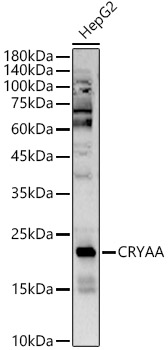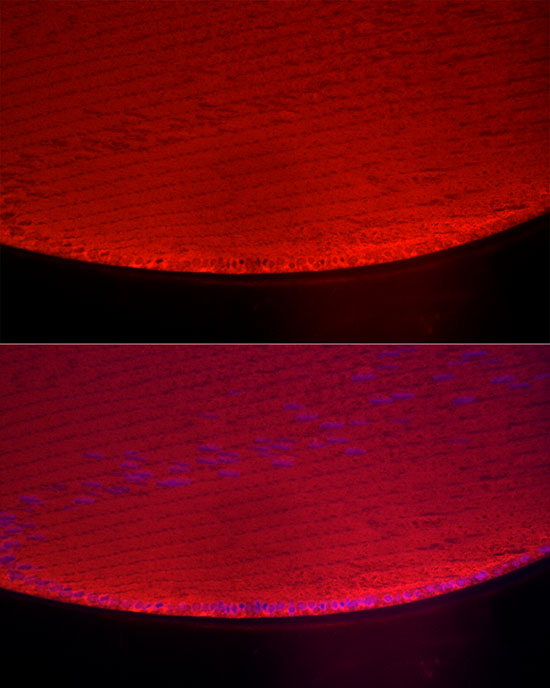CRYAA Polyclonal Antibody
For reference only. Please follow the manual included in your kit for instructions.
Catalog Number
RD86843A
Product Name
CRYAA Polyclonal Antibody
Catalog Number
RD86843A
Clonality
Polyclonal
Purification Method
Affinity purification
Isotype
IgG
Host
Rabbit
Background
Mammalian lens crystallins are divided into alpha, beta, and gamma families. Alpha crystallins are composed of two gene products: alpha-A and alpha-B, for acidic and basic, respectively. Alpha crystallins can be induced by heat shock and are members of the small heat shock protein (HSP20) family. They act as molecular chaperones although they do not renature proteins and release them in the fashion of a true chaperone; instead they hold them in large soluble aggregates. Post-translational modifications decrease the ability to chaperone. These heterogeneous aggregates consist of 30-40 subunits; the alpha-A and alpha-B subunits have a 3:1 ratio, respectively. Two additional functions of alpha crystallins are an autokinase activity and participation in the intracellular architecture. The encoded protein has been identified as a moonlighting protein based on its ability to perform mechanistically distinct functions. Alpha-A and alpha-B gene products are differentially expressed; alpha-A is preferentially restricted to the lens and alpha-B is expressed widely in many tissues and organs. Defects in this gene cause autosomal dominant congenital cataract (ADCC).
Immunogen Information
Immunogen
Recombinant fusion protein of human CRYAA
Gene ID
1409
Swissprot
P02489
Synonyms
CRYAACRYA1CTRCT9HSPB4
Calculated MW
40kDa
Observed MW
60KDa
Applications
Reactivity
Human,Mouse,Rat
Tested Applications
WB,IF
Conjugation
Unconjugated
Dilution
WB 1:500-1:2000,IF 1:50-1:200
Concentration
1 mg/mL
Storage Buffer
PBS with 0.02% sodium azide,50% glycerol,pH7.3.
Storage Instructions
Store at -20°C Valid for 12 months. Avoid freeze / thaw cycles.

